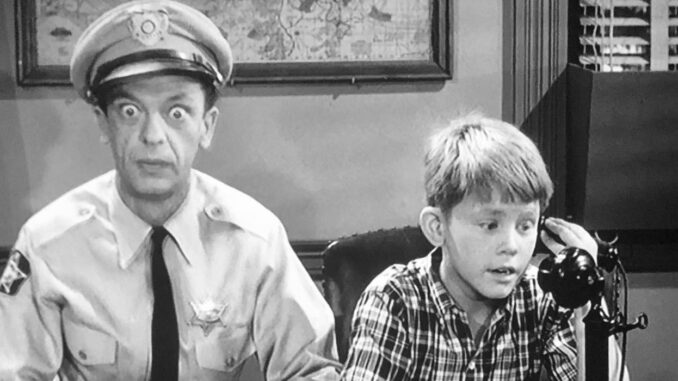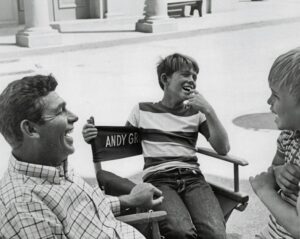
Introduction: Did You Even Recognize Opie in Season 1?
If you’re a fan of classic television, chances are you’ve spent time in the quaint little town of Mayberry. “The Andy Griffith Show” is pure Americana—a snapshot of simpler times, small-town charm, and moral lessons wrapped in gentle humor. But if you rewatch the show from the very beginning, one thing might throw you off: Opie Taylor, played by a young Ron Howard, doesn’t act like the Opie you remember.
Yep, in Season 1, Opie was practically a different kid. He was quiet, serious, and oddly stoic for a 6-year-old. By Season 2? Total shift. He’s cheerful, curious, and oh-so-adorable. So, what gives? Let’s break down how and why Opie’s characterization changed—and how that decision helped shape one of TV’s most beloved shows.
👦 Who Was Opie in Season 1?
The Early Version: Stoic and Wise Beyond His Years
Season 1 Opie is… a little strange, right? He’s unusually well-behaved, speaks like a miniature adult, and rarely smiles. Watching him, you might think he’s either deeply philosophical or low-key haunted.
In fact, in the pilot and several early episodes, Opie comes across as a somber little guy. He doesn’t display the typical energy or mischievous curiosity you’d expect from a young boy.
Why Was He So Serious?
Blame it on the tone of early episodes. The showrunners initially leaned more into dramatic family storytelling. In trying to portray a moral father-son bond, they may have gone too far in making Opie “noble” rather than relatable.
🎭 The Creative Shift: What Sparked the Change in Opie?
Sheldon Leonard’s Influence
The show’s executive producer, Sheldon Leonard, realized early on that the dynamic between Andy and Opie wasn’t clicking with audiences the way it could. While Andy Taylor (played by Andy Griffith) was warm and approachable, Opie felt more like a scriptwriter’s ideal child than a real one.
A Conversation That Changed TV History
According to Ron Howard and Andy Griffith in later interviews, producers wanted Opie to feel more like an actual kid. That meant adding in jokes, childish behavior, and even some sass. Andy Griffith, who had excellent comedic instincts, leaned into the idea—and the chemistry between father and son instantly became more authentic.
📺 Season 2: Meet the “Real” Opie
Personality Overhaul
By Season 2, Opie laughed more, got into harmless trouble, and wasn’t afraid to question his father. He became a curious, charming kid that viewers fell in love with. His lines became funnier, his expressions more animated, and his relationship with Andy turned more playful and emotional.
The Writing Got Sharper
Writers started to craft situations that let Opie shine. Whether he was accidentally adopting a dog or hilariously misunderstanding an adult conversation, Opie became a genuine scene-stealer.

🧠 Opie’s Evolution Reflects a Shift in Storytelling
From Drama to Comedy-Driven Heart
Season 1 episodes often centered on more serious themes—death, discipline, honesty—with a tone that sometimes felt heavy. As the show matured, it balanced life lessons with humor, and Opie’s character was essential to that formula.
Child Viewers Got a Hero
Kids watching at home could now relate to Opie. He wasn’t just “Andy’s son”; he was the beating heart of many episodes. The change wasn’t just about personality—it was about giving young viewers a voice on the screen.
🎤 Ron Howard’s Take on the Change
The Actor Grew Into the Role
Ron Howard, in many interviews, has talked about how he didn’t even realize how much his character had changed until he watched reruns as an adult. He credited Andy Griffith’s mentoring for helping him evolve into a more natural performer.
Confidence Boost
As Ron grew more confident in front of the camera, the writers felt comfortable giving him more to do. That confidence came through in Opie’s delivery, charm, and even comedic timing.
🧩 The Show’s Writers Found the Right Balance
From “Perfect Kid” to “Lovable Rascal”
The early Opie might’ve satisfied parental fantasies about the ideal child, but the revised Opie captured real hearts. Writers gave him imperfections—he fibbed, got jealous, made mistakes—and that made him human.
Emotionally Honest Moments
Some of the show’s most emotional scenes involve Opie grappling with disappointment or making moral decisions, but now they felt earned and not preachy.
📽️ Iconic Opie Moments Post-Season 1
“Opie the Birdman” (Season 4)
This episode alone proves how much Opie had grown as a character. After accidentally killing a mother bird with his slingshot, Opie takes on the responsibility of raising her chicks. It’s one of the most beloved episodes in TV history.
“Barney’s Replacement”
Opie and Barney have a uniquely charming relationship. In this episode, Opie’s support for Barney feels genuine, with warmth and humor that wouldn’t have come from Season 1’s stiffer version.
🎬 Behind-the-Scenes: Real-Life Chemistry Between Cast Members
Andy and Ron Were Like Father and Son Off-Camera
Their off-screen relationship brought authenticity to their on-screen bond. Andy Griffith treated Ron like his own child, guiding him with patience and respect—qualities that translated beautifully on screen.
Don Knotts’ Influence
Barney Fife’s high-energy antics brought out a funnier, more animated Opie. Their interactions gave Opie room to be silly and expressive.
💡 Why This Change Mattered So Much
It Humanized Mayberry
Mayberry wasn’t just a town of moral lessons—it became a place full of heart and laughter. And Opie was the perfect embodiment of that spirit.
It Helped the Show Stand the Test of Time
The Andy Griffith Show lasted eight seasons and remains beloved today. Opie’s growth was a major part of that enduring legacy.
🕰️ The Legacy of Opie Taylor
Ron Howard’s Career Took Off
Without Opie’s transformation, would we have gotten the director of Apollo 13, A Beautiful Mind, and many more? Probably not. This role gave Ron Howard a solid foundation in storytelling, empathy, and performance.
The Template for TV Kids
Future TV kids owe a lot to Opie’s arc. He was one of the first child characters allowed to be complex—silly one minute, thoughtful the next.
Conclusion: From Script to Heartbeat of Mayberry
“The Andy Griffith Show” didn’t just evolve—it improved. And a big part of that evolution was reshaping Opie from a one-dimensional, serious child into a lively, lovable character that mirrored the spirit of the town itself. This wasn’t just smart TV—it was timeless storytelling. Opie didn’t just grow up on the show; he helped the show grow up, too.
❓ FAQs
1. Why did Opie act so differently in Season 1?
Opie was originally written as a more serious, almost adult-like character to reflect the show’s initial dramatic tone. That changed as the series embraced more humor and heart.
2. Did Andy Griffith have input in changing Opie’s character?
Yes, Andy Griffith played a major role in shaping the show’s tone and supported the idea of making Opie more playful and realistic.
3. Was Ron Howard comfortable with the changes?
Definitely. As Ron Howard grew more confident as an actor, he embraced the new, more expressive version of Opie.
4. Are there other characters that changed like Opie?
Yes, Barney Fife became more exaggerated and comedic over time, and even Aunt Bee evolved to balance sternness with warmth.
5. Which episode best showcases the “new” Opie?
“Opie the Birdman” from Season 4 is widely considered one of the best and most emotionally impactful episodes that highlight Opie’s depth and charm.
